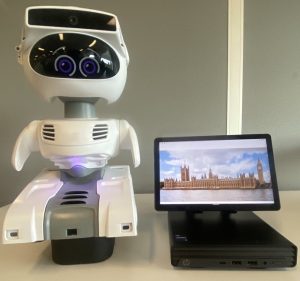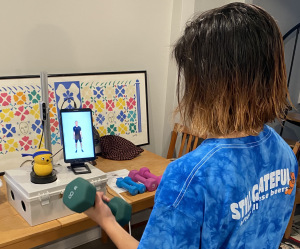
“A big part of my work involves understanding not just the robot, but the user. We want to build systems that provide highly personalised teaching or therapy.”
Dr Nicole Salomons is a Lecturer in the Department of Computing and I-X at Imperial College London. Her research explores the potential for AI and robots to benefit society through learning, teaching and therapy in domestic and public settings.
Getting the bug for computers

Nicole says she was interested in computers from an early age – in part thanks to her father, who had a degree in computer science.
“I saw how computers could do things for you – and do them quickly. I started with some online courses, which eventually led to a degree in computer science at Universidade Federal do Paraná in Brazil, which is where I’m from.
“While I was at university I became involved in robotics clubs and robotics research. I was fascinated by all things AI and robots and began to think about how you could programme them to help people in everyday life.”
Taking a people-centred approach
Nicole works in the field of human-robot interaction, which combines robotics, AI and some psychology. She’s interested in how systems can be designed to understand people, then use that understanding to provide highly personalised support.
One example is a robot that can perform therapy for children with Autism Spectrum Disorder (ASD).
“There’s something magical that happens between children with autism and robots that helps them engage with therapy. They learn from the robots and develop skills that they can carry into their daily lives.”
Early results indicate that this type of therapy is incredibly effective, with researchers seeing clinical improvements in children in just one month, compared to the several months or even a year it normally takes to see an impact.
How to build systems using a collaborative approach
 Nicole explains that her team doesn’t start by building a system that they think will help people – they start by engaging with specialists. They also work closely with the people receiving the therapy and their family members.
Nicole explains that her team doesn’t start by building a system that they think will help people – they start by engaging with specialists. They also work closely with the people receiving the therapy and their family members.
“A big part of my work involves understanding not just the robot, but the user. We want to build systems that can model individuals’ skills, preferences and personalities in a way that means it can provide highly personalised teaching or therapy.”
Nicole also makes it clear that there are additional considerations that need to be considered when it comes to these technologies, particularly around privacy and data protection.
“If we’re developing robots that will be in people’s homes, we need to be really careful with privacy – especially when it comes to more vulnerable groups like children and older people. We’re asking questions like ‘how do we preserve privacy?’ and ‘how do we collect the minimal amount of data?’”
The future of robotics
Does Nicole envision a future where we buy robots in the supermarkets, like any other gadget? Not just yet, but she thinks that one day they may be more common in households.
“Robots are still quite expensive – a very simple social robotic system can cost upwards of £5,000, which is out of the price range of most people.
“We’re moving in the right direction – a former colleague of mine, for example, is building an educational robot that costs around £1,000. And while this might be out of reach for individuals, it could be used in public spaces like schools, for example to provide after-school tutoring.”
You can find out more about Nicole’s work on her website.
Read next
Read about Imperial’s Artificial Intelligence Futurists
Learn about Imperial’s AI guidance for staff and guidance for students.